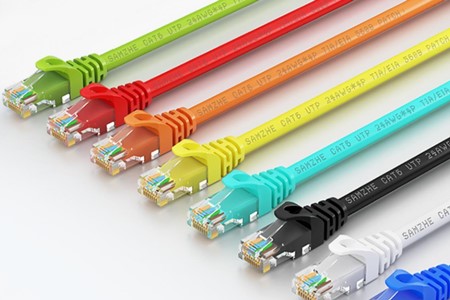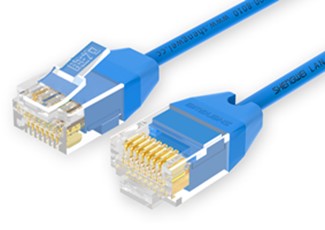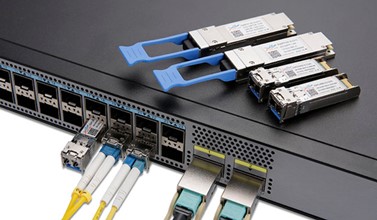
The Internet is ubiquitous in our lives, and it has even reached the point where it is inseparable. Mobile Taobao, JD online shopping, WeChat, map navigation, games, entertainment are all inseparable from WIFI and 4G&5G networks. In the same office, Baidu search for information, online education and learning, LAN sharing, etc. are all inseparable from the Internet.
As each of us needs network, the requirements for the network are getting higher and higher, such as downloading movies, uploading files quickly, watching high-definition videos online without freezing, etc. Due to this demand, the network has changed from the original 100M to the current gigabit and 10 gigabytes came into being, what is the difference between them,
The following is a gigabit network transmission line. The gigabit network refers to the theoretical data transmission rate that can reach 1000Mbps. Of course, the gigabit network is also backward compatible and can also transmit 100 megabits;

Our commonly used network cables are classified into three types, four types, five types, super five types, six types, six types, and seven types based on their electrical performance. At present, Category 3 and Category 4 twisted pair cables on the market have been eliminated. Category 5 is a type that is not often used. Commonly used types of network cables are Category 5 and Category 6 cables. Category 7 cables are expensive and not widely used.
In principle, the higher the number, the newer the version, the higher the bandwidth, and the higher the price of the Category 5, Category 5, Category 6, and Category 6 network cables. Category 5 network cable, the outer skin will be marked with the word "CAT5", the transmission bandwidth is 100MHz, used for voice transmission and data transmission with a maximum transmission rate of 100Mbps, mainly used for 100M and 10M networks, and has been replaced by Category 5 super cables

Category 6 network cables are marked with "CAT6" on the outer skin, which generally refers to unshielded network cables, which are mainly used in gigabit networks, and their transmission performance is much higher than the standard of Category 5 cables.
What is 10 Gigabit Network? As we all know, the main difference between Gigabit optical network and 10 Gigabit optical network is that their transmission rate is different. The transmission rate of Gigabit network is 1000 Mbps, while the transmission rate of 10 Gigabit network is 10 Gbps. The transmission of the 10 Gigabit network is inseparable from the 10 Gigabit module.
So what is a 10G optical module? A 10G optical module is an optical module with a transmission rate of 10G, also known as a 10G optical module, and its packaging form is SFP+ or XFP. Optical modules are divided into single-mode and multi-mode. Generally, the wavelength of multi-mode light is 850nm, and the wavelength of single-mode light is mainly 1310nm and 1550nm.
Multi-mode optical modules are mostly used in networks with relatively low transmission rates and relatively short transmission distances, such as local area networks. Such networks usually have many nodes, many joints, many bends, large amounts of connectors and couplers, and units. The length of the optical fiber uses the characteristics of a large number of light sources, and the use of multi-mode optical modules can effectively reduce network costs; single-mode optical modules are mostly used in lines with long transmission distances and relatively high transmission rates, such as long-distance trunk transmission and metropolitan area network construction. Etc. In addition, the cost of single-mode is much higher than that of multi-mode

What is an optical port? Optical port is the abbreviation for optical fiber interface. The optical fiber interface is a physical interface used to connect an optical fiber cable. The principle is that the light enters the optically thin medium from the optically dense medium to cause total reflection. Usually there are several types such as SC, ST, FC, etc., which are applied to a fiber bandwidth interface of large equipment such as computer rooms and cabinets.
What is an electrical port? The electrical port is relative to the optical port, which refers to the physical characteristics of the fireproof device, mainly refers to the copper cable, which is the electrical signal processed. Currently, the commonly used network interfaces include 100M electrical ports and gigabit electrical ports.
The difference between optical port and electrical port: Optical port is the transformation of the transmission medium on the pure physical layer. In fact, it is the conversion of optical signal and electrical signal. The optical port is what we usually say with the optical board expansion slot that can be inserted into the optical fiber for long-distance data transmission; the electrical port is what we often call the RJ45 port, which is the network cable port.


